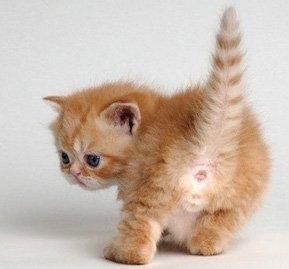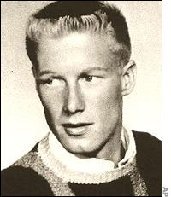A motorcycle helmet is a type of helmet used by motorcycle riders. Motorcycle helmets contribute to motorcycle safety by protecting the rider's head in the event of an impact. They reduce the risk of head injury by 69% and the risk of death by 42%. Their use is required by law in many countries.
Motorcycle helmets consist of a polystyrene foam inner shell that absorbs the shock of an impact, and a protective plastic outer layer. Several variations exist, notably helmets that cover the chin area and helmets that do not. Some helmets provide additional conveniences, such as ventilation, face shields, sun visors, ear protection or intercom.
The origins of the crash helmet date back to the Brooklands race track in early 1914, when a medical officer, Dr. Eric Gardner, noticed he was seeing a motor cyclist with head injuries about every two weeks. He got a Mr. Moss of Bethnal Green to make canvas and shellac helmets stiff enough to stand a heavy blow and smooth enough to glance off any projections it encountered. He presented the design to the Auto-Cycle Union where it was initially condemned, but later converted to the idea and made them compulsory for the 1914 Isle of Man TT races, although there was resistance from riders. Gardner took 94 of these helmets with him to the Isle of Man, and one rider who hit a gate with a glancing blow was saved by the helmet. Dr. Gardner received a letter later from the Isle of Man medical officer stating that after the T.T. they normally had "several interesting concussion cases" but that in 1914 there were none.
Safety effects
A 2008 systematic study showed that helmets reduce the risk of head injury by around 69% and the risk of death by around 42%.
Although it was once speculated that wearing a motorcycle helmet increased neck and spinal injuries in a crash, recent evidence has shown the opposite to be the case: helmets protect against cervical spine injury. A study that is often cited when advancing the argument that helmets might increase the incidence of neck and spinal injuries dates back to the mid-1980s and "used flawed statistical reasoning".
Basic types
There are five basic types of helmets intended for motorcycling, and others not intended for motorcycling but which are used by some riders. All of these types of helmets are secured by a chin strap, and their protective benefits are greatly reduced, if not eliminated, if the chin strap is not securely fastened so as to maintain a snug fit.
If you want to read more, go here: https://en.wikipedia.org/wiki/Motorcycle_helmet
You wouldn't believe how easy our Chicken Egg Rolls are to make. So easy in fact, you'll throw those take out menus right into the trash!
Some home chefs may be intimidated by egg rolls, since they are such a take out staple. But we're here to let you know that there's no reason to be! In the video below, we'll show you exactly how easy it is to make these chicken egg rolls. All you need to do is blend a few delicious ingredients, roll them up in an egg roll shell, and fry until golden brown and crispy. They're so easy to make that you'll wonder why it took you so long to give them a try at home! And, since they're ready in under 15 minutes, these Chicken Egg Rolls make a great last-minute appetizer, too.
Of course, we also love these homemade chicken egg rolls because they taste amazing. The crunchy veggies combine with soy sauce and ginger, plus chicken of course, for a filling that's bursting with flavor. Once you add the satisfying crunch of the egg roll wrapping, you have an appetizer that's so delicious you'll want another egg roll as soon as you've finished your first. This recipe is great for a party, but you may want to make a few extras since everyone is sure to want second helpings!
- 1/2 cup soy sauce
- 1/4 cup packed light brown sugar
- 1 tablespoon ground ginger
- 2 teaspoons garlic powder
- 6 cups shredded Chinese cabbage
- 1 large carrot, peeled and shredded
- 3 scallions, chopped
- 1 cup diced cooked chicken
- 12 egg roll wrappers
- Oil for frying
- 1 egg, lightly beaten
- In a small bowl, combine soy sauce, brown sugar, ginger, and garlic powder; mix well.
- In a large bowl, combine cabbage, carrot, scallions, and chicken; mix well. Pour soy sauce mixture over cabbage mixture; toss to coat well and let stand 10 minutes. Place cabbage mixture in a colander and squeeze to drain well.
- Spoon about 1/2 cup cabbage mixture evenly onto center of each egg roll wrapper. Lightly brush edges of egg roll with beaten egg. Fold one corner of each egg roll wrapper up over cabbage mixture then fold both sides over, envelope fashion; roll up tightly.
- In a deep medium saucepan over medium-high heat, heat about 1-1/2 inches oil until hot but not smoking. Add egg rolls in batches and fry 3 to 4 minutes per side, or until golden. Drain on a paper towel-lined platter. Serve immediately, but be sure to use caution -- the filling will be hot.

Daylight Saving Time begins on the second Sunday in March in the USA. The practice gives people an extra hour of sunlight in the evening by setting the clock ahead one hour on a predetermined date each year.
The practice of Daylight Saving Time (DST) advances clocks during the summer months. It causes us to lose an hour for one day. However, the practice allows people to get up earlier in the morning and experience more daylight in the evening. Typically, users of DST adjust clocks forward one hour near the start of spring. Then, they change them back again in the autumn.
The system has received both advocacy and criticism. Setting clocks forward benefits retail business, sports, and other activities by exploiting sunlight after working hours. However, the practice causes problems for evening entertainment and other activities tied to the sun or darkness. For example, farming and fireworks shows are both affected.
Although some early proponents of DST aimed to reduce the evening use of incandescent lighting, usage patterns differ greatly. Additionally, research about how DST currently affects energy use is limited or contradictory.
Problems sometimes caused by DST clock shifts include:
- Complicating timekeeping.
- Disrupting meetings, travel, billing, record keeping, medical devices, heavy equipment
- Impacting sleep patterns
Software often adjusts computer clocks automatically, but this can be limited and error-prone. In addition, programming is particularly problematic when various jurisdictions change the dates and timings of DST changes.
HOW TO OBSERVE
- Besides adjusting our clocks, it’s important to adjust our sleep schedules, too. Many of us go into the time change sleep deprived. Don’t do this during Daylight Saving weekend.
- Start preparing your body and anyone in your household for an earlier bedtime.
- That includes pets. Their potty and feeding schedules will need to be adjusted, too. Start a few days before if at all possible.
- In the end, you and your entire household will be able to benefit from the additional sunlight in the evenings by enjoying outdoor activities without feeling the drag of lack of sleep.
- Another way to celebrate the day might include writing your representatives in Congress. According to the National Congress of State Legislatures, nearly every state has tackled the issue of daylight saving time and whether to end it or not. Even at a federal level, the issue has been brought to the table a time or two.
- Of course, most importantly, be sure to turn your clocks ahead.
-
DAYLIGHT SAVING TIME HISTORY
-
George Vernon Hudson from New Zealand proposed the modern version of daylight saving in 1895. Germany and Austria-Hungary were the first countries to use it starting on 30 April 1916.
The energy crisis in the 1970s accelerated the growth of Daylight Saving Time. It has been argued that more natural light in the evening hours uses less electricity due to less artificial lighting requirements. As a result, many retail shops and tourist attractions also enjoy more business.














